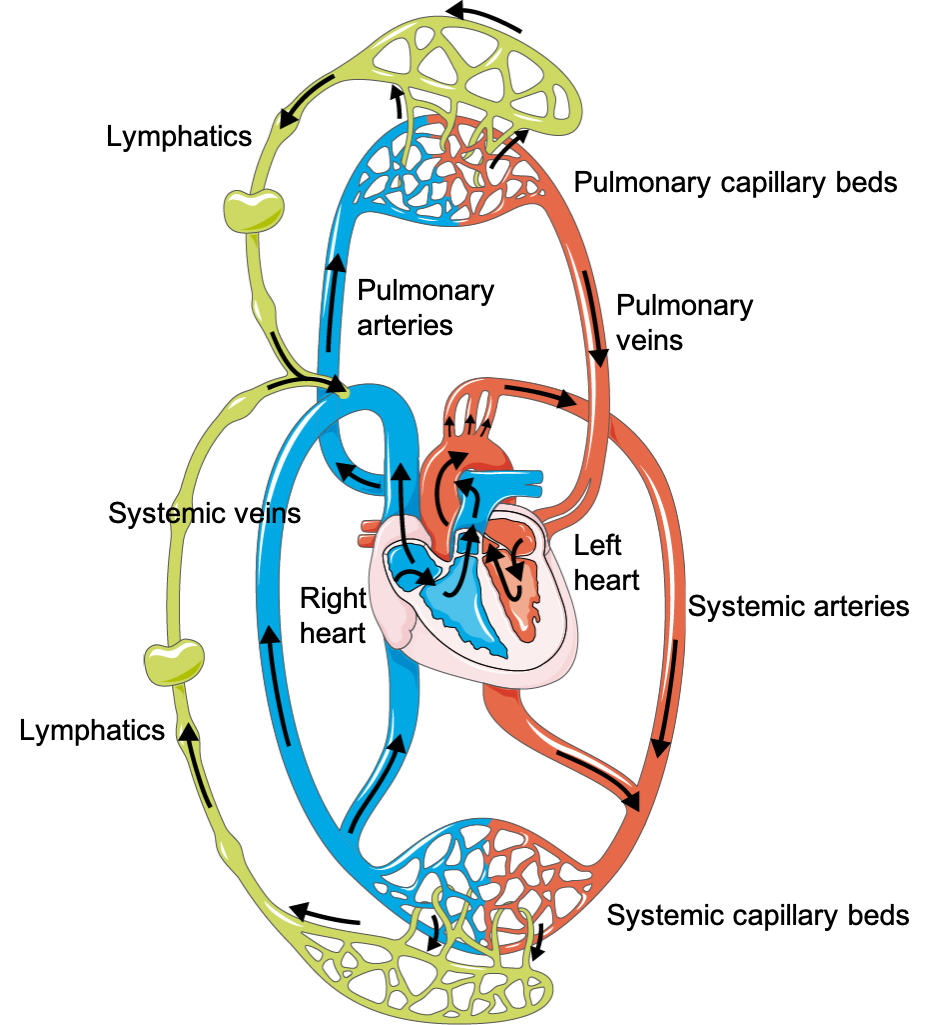Cardiovascular Physiology and Pathophysiology
-
Physiology
Structure and Function4 Topics -
Lymphatics and Edema Formation
-
The Microcirculation
-
Vascular Control3 Topics
-
The Cardiac Cycle
-
Determinants of Myocardial Performance7 Topics
-
Neuro-Control of Heart and Vasculature4 Topics
-
Electro-Mechanical Association4 Topics
-
Electrical Side of the Heart4 Topics
-
PathophysiologyDefining Heart Failure
-
Causes of Heart Failure
-
MVO2 and Heart Failure
-
Cardiac Output and Heart Failure7 Topics
-
Compensation for Circulatory Failure
-
Vascular Tone in Heart Failure
Defining Heart Failure
What is heart failure?
Heart failure (HF) is the state wherein the heart fails to meet the metabolic demands of the tissues. Therefore cardiac output is insufficient to meet the needs of the tissues. This usually occurs in the face of elevated left ventricular pressures at end diastole.
HF may occur in conditions where the heart is producing a normal cardiac output, but the metabolic needs of the tissues are increased, such as in hyperthyroidism or anemia, and so cardiac output fails to meet their needs. Thus, it may occur in conditions where the strength of the heart muscle appears normal.
What is congestive heart failure?
Congestive heart failure (CHF) occurs when left ventricular pressure at end diastole is elevated. This results in elevated pulmonary venous pressures and pulmonary edema.
CHF occurs when the volume of blood presented to the heart is in excess of the heart’s capacity to move it along. Consequently, fluid builds up behind the heart. If the inability to move the volume of blood forward is due to a left heart problem, then pulmonary venous congestion develops and later pulmonary edema. Subsequently this can lead to pleural effusion and abdominal effusion. If the abnormality lies in the right heart or the pulmonary arteries, wherein they limit the ability to move blood forward, then congestion occurs behind the right heart (causing pleural effusion and/or ascites).

Many but not all cases of heart failure also have congestive heart failure. Therefore, it is frequently useful to look for evidence of congestion to suggest the presence of heart failure.
How is heart disease different from heart failure?
Heart murmurs, arrhythmias, and other cardiac abnormalities may provide evidence for heart disease. Individuals with these signs will not show heart failure until these disease states are severe. Many forms of heart disease may not warrant therapy; however, all forms of heart failure require therapeutic intervention.
